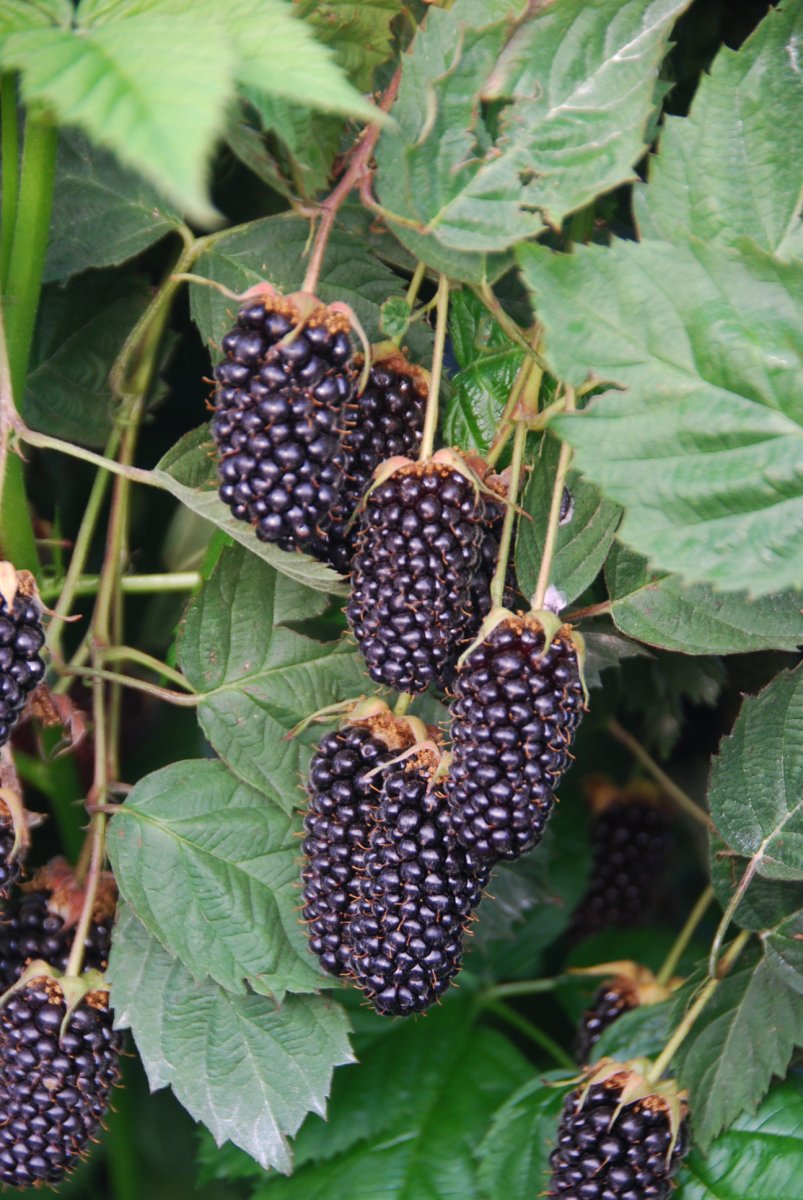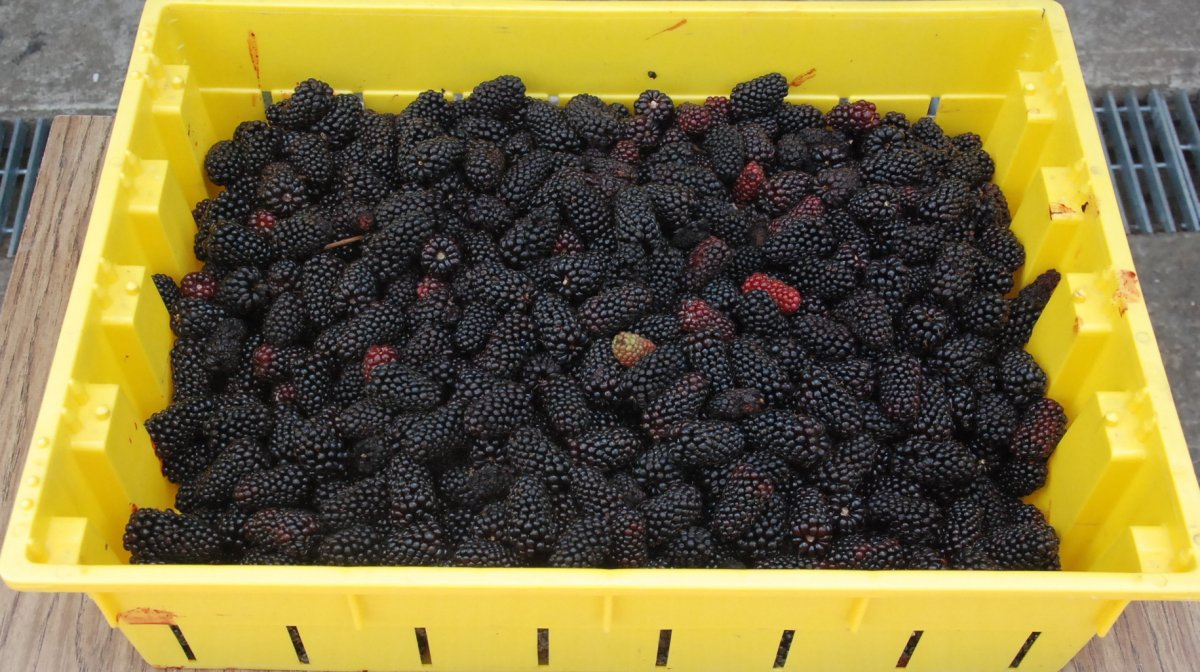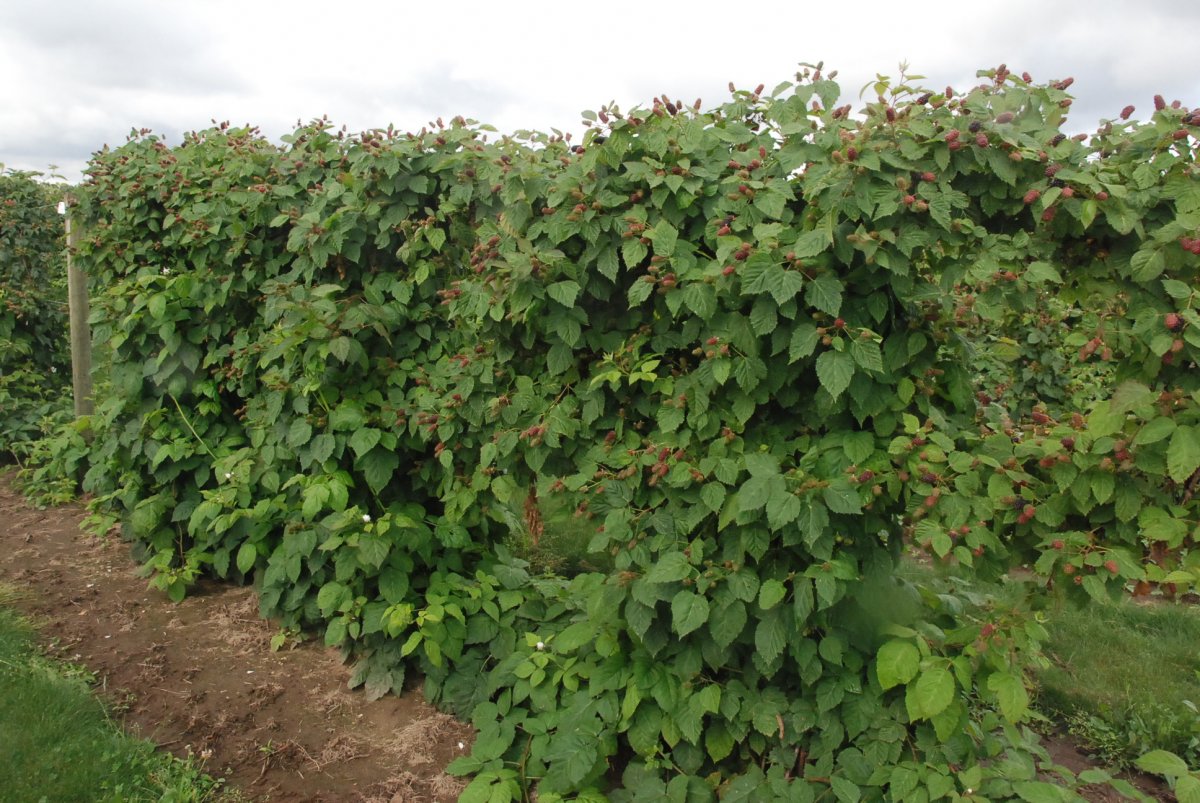INVENTOR: CHAD FINN, USDA-ARS CORVALLIS
COLLABORATORS: Bernadine Strik, Oregon State University (OSU) Department of Horticulture; Brian Yorgey, OSU Department of Food Science; Mary Peterson, USDA-ARS Corvallis; Jungmin Lee, USDA-ARS Parma; Robert Martin, USDA-ARS Corvallis; and Harvey Hall, Plant and Food Research, New Zealand
What makes ‘Columbia Star’ special?
It is the first machine-harvestable, thornless cultivar that has fruit quality that, based on blind panel assessment, was rated equal to or better than ‘Marion’, the current industry standard. Besides having thornless canes, it is high yielding and is the first thornless blackberry cultivar using the ‘Lincoln Logan’ source of thornlessness.
When was the cross made?
2005
What is the pedigree of ‘Columbia Star’?
NZ 9629-1 and ORUS 1350-2 (‘Black Butte’ × ORUS 828-43). See below for some history behind these selections!
What is the size of the family from which ‘Columbia Star’ was chosen?
55, a moderate size. Tried for 100.
Are there other siblings that have commercial potential?
Yes. Another sibling, ORUS 3447-2 will be released in the upcoming year. Will this cultivar be used in RosBREED and how? Columbia Star’ is the parent of crosses that will be phenotyped and genotyped with the goal of identifying loci controlling fruit sweetness.
Other interesting tidbits…
‘Columbia Star’ is a true story of great germplasm, collaboration, and serendipity.
- One parent has a long history in our program. The NZ 9629-1 parent was a selection we made out of a population Harvey Hall sent to us from New Zealand (Plant & Food Research). That gave us the ‘Lincoln Logan’ source of thornlessness.
- The OSU Food Science Department did blind trials of it the first year we had it in a replicated trial, which identified it as outstanding. Grower collaborators in Lynden (Wash.) showed it was coldhardy enough and would machine-harvest well.
- One Oregon grower took a couple of leftover gallons of puree after a field day sampling and sent it to a major manufacturer who gave it their “seal of approval” as equal to ‘Marion.’
- A grower with one of the largest blackberry acreages in Oregon happened to visit the station the day we were going over our plots with a machine harvester. He saw the fruit coming off and was really excited. Two months later he told the growers who sell to him that he would back them on planting ‘Columbia Star’ and take their fruit.
This combination of people, germplasm, efforts, and events meant that ‘Columbia Star’ went from a selection to hundreds of thousands of plants being planted in less than 10 years from the time the cross was made!

